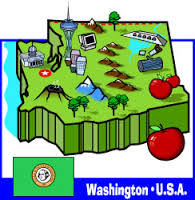
As much as I would love to talk about how my first travel assignment was such a positive experience and how much personal and professional growth I achieved from my time in the PNW, I’d be a liar. Now, don’t get me wrong, I do have many stories of working with incredible nurses, I have stories of helping amazing patients, and I have stories of personal achievements but I also have some of the opposite too.
First day nerves will happen in any job, nursing is no different. As an ER nurse, flexibility, adaptability, and communication are essential in making it through each shift, while maintaining some sense of controlled chaos. On my first day in WA, and my first shift in the USA, I attempted to look calm and relaxed on the outside; however, inside I was a jumbled mess. I kept saying to myself, “the patients are all the same it’s just a little different paperwork”. For the most part, my inner voice was correct, with a few minor exceptions.
The first minor exception that I am still not adapted to, is the break schedule. My first day in WA, I had arrived at the hospital at 0800 for paperwork and orientation. I received my credentials, and was introduced to the department. I was paired up with a nurse and shown the ropes of the ED. At 3 pm approximately 7 hours after arriving on the hospital grounds, I asked the orientation nurse about the break schedule, her response floored me. It was explained to me that on a 12 hour shift the ED, nurses work 12.5 hours and receives one 30 min break. She then went on to explain that it is unlikely the ED nurse actually gets to leave the floor (particularly on nights) and it is recommended to eat at the nurses desk.
At this moment many things flood into my brain, the first being EWWWW!
My princess Canadian side started to show through and I was in instant disbelief of what I was hearing. Working in BC (Union), I was en
titled to several breaks in a day and generally we took a morning break, lunch break and dinner break, and now I was being told “work longer, less breaks” and eat your food in a germ infested nurses station. I think it was hypoglycemia talking, but at that moment, I had an instant dislike for USA nursing.
Another minor adaptation I needed to adjust to was the pharmacology. Many names of medications were different, and there are medications we use in Canada that are not used in the USA and vise versa. An American nurse will not understand what you are asking for when you say Gravol, nor will you know what they are talking about when they ask you to get Phenergan. Believe me they will look at you as if your dense and wonder about your competencies if you cant even get them a widely used medication, how can they possibly trust you with cardiac drugs (which are more likely to be universal). Having the confidence to ask was hugely important to maintain safe medication delivery.
Equipment is another minor adaptation a travel nurse must learn to cope with. IV pumps, IV cannulas, monitors, and stretchers. Not only do you need to find comfort in fumbling around with an alarming IV pump, while your patient looks at you in disbelief but you must also learn a new language…stretchers are carts, saline locks are hep locks or buff caps, and d-stick is a capillary blood glucose. I think my first assignment gave me culture shock and yet I was only an hour from home.

Lastly, you would think, the personalities of the doctors and nurses would be something to adapt to; however amazing enough, there is one of “them” everywhere. I found comfort in observing that each department has one of each personality type and I found amusement in comparing the new faces to the familiar. Yes, the arrogant doctor who doesn’t like his orders questioned exists in each department and the micromanaging nurse is someone you learn to avoid; however, there is also the easy going doctor who is open to suggestions and the nurse who just gets your humor (who you later become Facebook friends with) and the many other personalities in between. The adapting that must take place with this group, is just trying to understand how each person fits into the department and anticipating their actions to ensure efficient and proficient patient care delivery.
The first assignment teaches you so much, there is hardly time to adapt before its over.
